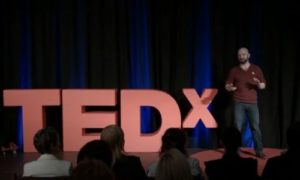Five Questions I Stole from the World’s Best Coaches, Why They Work, and How to Use Them to Start Powerful Coaching Conversations Today!
So far we’ve listened to the situational brilliance of Tony Robbins’s powerhouse hit (“What’s changed?”) and Rich Litvin’s classic (“What would make this an extraordinary conversation?”). And today we’re going to listen to Michael Neil’s Alt-Coach anthem: “What if you didn’t have to have a question? What if we both looked in a direction and saw what there was to see?”
And in learning why this question works, why I love it, and how you can use it, we’ll also look at how to challenge some fundamental assumptions many coaches and clients make, and how disrupting those assumptions can open up a trove of possibility and help you take your worst sessions and make them some of your best.
Master Coaching Awesome OPENs Track / Question 3: What if you didn’t have to have a question? What if we both looked in a direction and saw what there was to see? (Michael Neil)

Why it works: I got this question from a Michael Neil YouTube video, which you can find here:
https://youtu.be/l5mIe4DgMJY
In the video, a woman is sitting on stage with Michael and says she doesn’t know why she’s up there. She doesn’t even really know what her question is.
And in an instant Michael accepts her premise and context and shifts it entirely by asking, “What if you didn’t have to have a question? What if we both looked in a direction and saw what there was to see?”
He extends this by using a metaphor of taking a stroll in a park and juxtaposes it with the idea that you’d have to have a specific purpose in mind for what you’re looking for on a stroll—which brings a moment of lightness and humor to the conversation.
The client believes she needs to know what to ask to get value out of the conversation. This belief is an assumption Michael undoes by offering an alternate reality; one in which coaching is more than having a question to answer.
And in shifting from one reality to the other he takes the resistance offered by the client, “I don’t know why I’m up here,” and turns it into an opportunity, “What if you didn’t have to know why you were up here?” And in that moment possibility is created.
Why I love it: Our clients often resist the truth or perspective we offer, but most coaches make the mistake of fighting or pushing against that truth.
And while directly challenging a truth can sometimes serve a client, often this action causes and even sharper and stronger reaction.
In contrast, with this OPEN Michael does a beautiful job of accepting the client’s resistance and then creating a larger context for the conversation.
This is an especially powerful example because it reveals that while most coaches have the ability to see and shift a client’s assumptions, a master coach has the ability to see and shift their own assumptions in service of the client or the flow of a session.
How you can use it: The easiest way to begin to use a question like this is to pull it out whenever a client comes to a session without anything to talk about. But as you do, be careful your stroll doesn’t turn into a madman’s ramble. Your job as coach is to follow your client until you can discern or guess what journey your client’s subconscious is wanting to take and then to offer a path to see if their conscious self would like to walk it.
In this conversation, Michael does this using more teaching than coaching, but what he doesn’t do is let the client wander and get lost with her.
But if you want to go deeper with the underlying skill of feng shui-ing client resistance, you can start by noticing how you respond to client resistance in your sessions. Try to take a few notes whenever you notice resistance (especially in the opening) and how you respond to it. Then once you’ve brought some awareness to this, see if you can accept the resistance and use the momentum of that resistance to create a sense of spaciousness.
Of course this takes time and practice. Going deeper on this by practicing with a sparring partner and getting feedback can be incredibly valuable for refining this ability, but just bringing awareness to it alone is a great place to start.
That’s it for this one. Tomorrow we’re going to cover Byron Katie’s super-famous opening question from The Work: “Is it true?” And talk about why it’s so effective and how you can use the power of this question even if you don’t love the system of The Work as BK offers it.
PS: Remember, all of this analysis was made possible by this simple coaching tool we created called the Coaching Canvas. Get your free copy here: https://samuraicoachingdojo.com/coaching-canvas
PPS: And for more on great Opens and other coaching goodness, remember to sign up for our free Micro-Dojo webinar-class-teaching-thingy called
Death to Zombie Coaching Sessions!
(How to prevent brain-dead coaching sessions that go nowhere.)
Register now!!!
PPPS: Enjoying this series? Please share the love with your fellow coaches and others who might benefit!

